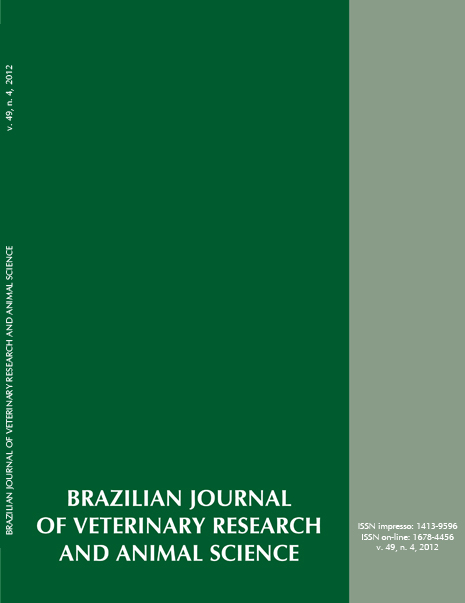Efficiency of salivary progesterone measurement to identify the ovulation in bitches
DOI:
https://doi.org/10.11606/issn.1678-4456.v49i4p269-276Keywords:
Immunoassay, Progesterone, Saliva, Bitches, ReproductionAbstract
Several authors have emphasized the importance of monitoring estrous cycle in bitches and mentioned technique examples of how it can be done. The aim of this study was to evaluate the salivary progesterone quantification technique in order to identify ovulation in this species. To compound the experimental group, 13 bitches of different breeds (no specific breed, English Bulldog, Bernesse Mountain Dog)and different ages (from 11 months to 9 years old) were used. Blood and saliva samples were collected simultaneously in all animals, starting about the first day of proestrus clinical signs. Salivary samples were collected with a specific commercial device (Salivette®). This method was effective, since it has become possible to obtain enough volume in almost all samples to quantify salivary progesterone (100 μLfor duplicate quantification). Serum progesterone was quantified by radioimmunoassay and salivary progesterone by enzyme immunoassay, both of them with commercial kits. There was an increasing, linear and positive correlation between salivary and serum progesterone (r=0.704; p<0.0001) in bitches. One of the animals had an anovulatory cycle, in which, for 13 days, seric progesterone levels were maintained between 1.67 and 3.76 ng/mL and salivary progesterone levels were maintained between 19.55 and 236.77 pg/mL. It was concluded that salivary progesterone levels measured by enzyme immunoassay is a technique that can be used to evaluate the presence or absence of ovulation in bitches.
Downloads
Downloads
Published
Issue
Section
License
The journal content is authorized under the Creative Commons BY-NC-SA license (summary of the license: https://





